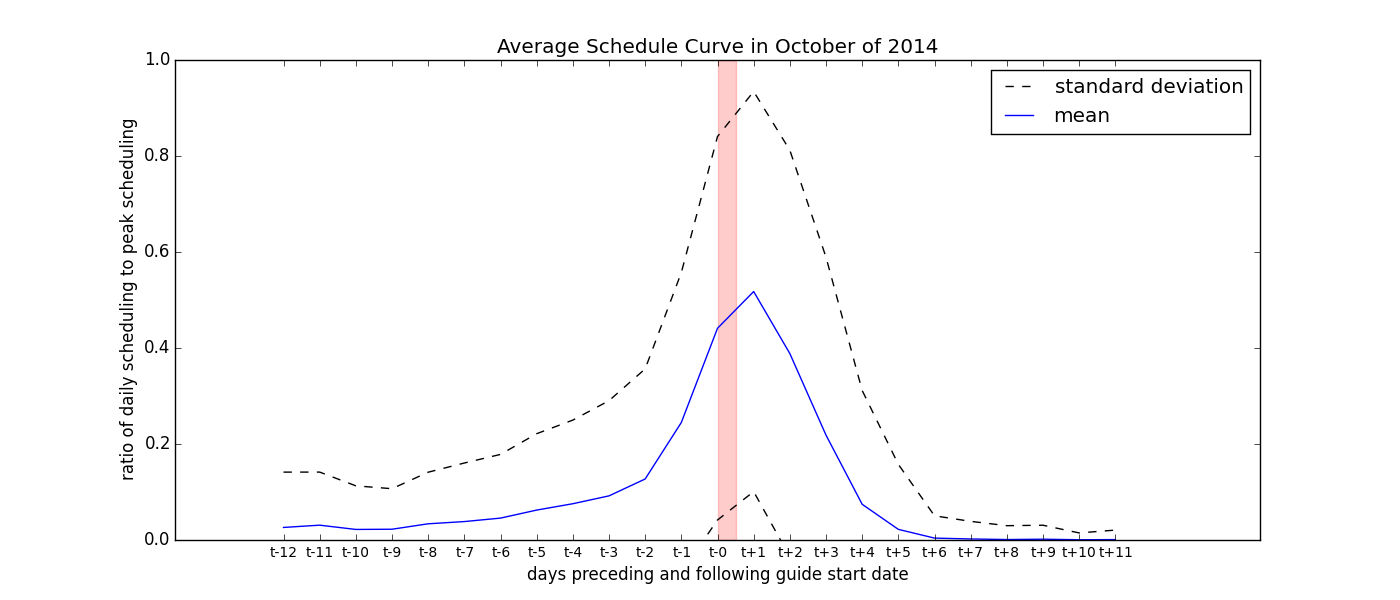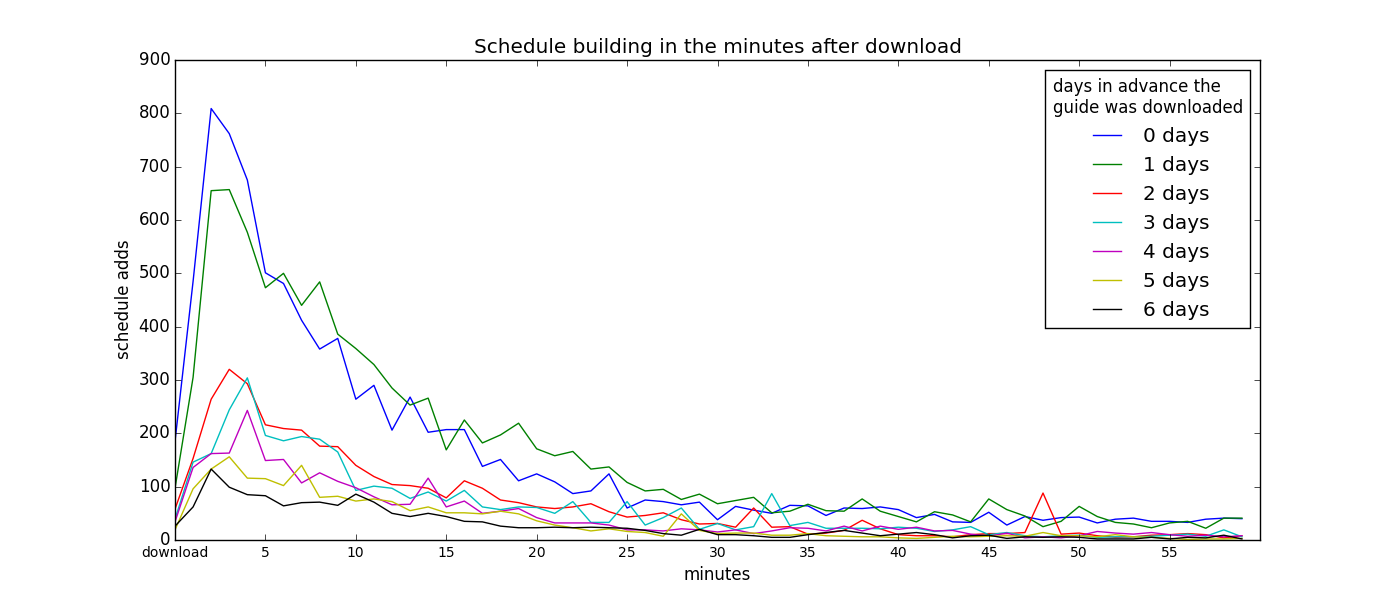Ask A Data Scientist: When Do Attendees Build Their Schedules?
Patrick McNally is Guidebook’s Director of R&D. He earned his doctorate in computer science at Northwestern University weathering the arctic conditions of Chicago. He likes clearly labeled axes and lunch conversations about gradient descent algorithms.
When do attendees build personal schedules, and what does that mean for event organizers?
Today I want to share some data on one of the most important things event attendees do on the Guidebook platform: personal schedule building. Building a schedule is one of the surest signs an attendee is engaging meaningfully with the material in a guide. For this reason, Guidebook is very interested in understanding as much as we can about the schedule building process. I want to share some of our insight on when schedule building occurs and what this means for publishing and promoting guides on our platform. All the analysis in this post is based on observations from October of this year.
Ultimately, I’ll show that a large portion of schedule building occurs the hour after a guide is downloaded, no matter if the download occurs the day an event starts or six days before. The takeaway for event organizers is that your schedule of events needs to be in place when people download your guide. Don’t publish your guide with a substantially incomplete schedule of events, as early downloaders will do a significant amount of their schedule planning with that incomplete schedule.
Let’s start by taking a look at the average scheduling curve we observed for events in the month of October 2014:

This plot shows the average scheduling curve for an event centered around its parent guide’s start date. It tells us that events are added to schedules predominantly in the days leading up to the guide’s start date, with the most scheduling occurring the first two days of the event. This graph isn’t very surprising if you are aware of typical guide download behavior. Most downloads occur the day of a conference, with a steady ramp up in the days before. If most people download guides day 0, it’s not really all that surprising that most people also build their schedules day 0. When else would they be doing it?
Unfortunately, this doesn’t tell us something interesting yet. Anything surprising that might be in this data is being drowned out by the typical download behavior of attendees. What we really want to know is what scheduling behavior looks like if we try and differentiate the downloads that occur each day leading up to the guide’s start. In other words, there are many fewer people who download a guide six days in advance than there are people who download day zero. The question is, do people who download six days in advance build their schedule on day zero just like the day zero downloaders, or do they do something different?
It turns out they do something very different. Here are the absolute scheduling curves segmented by how many days prior to the guide’s start date the download occurred:

Let’s break this graph down a bit. First of all, each color represents a different group of attendees based on how far in advance they downloaded the guide. The plots are staggered because of this. Here’s the interesting part of this graph: each cohort of attendees see their peak schedule building activity occur the day of download, with secondary peaks corresponding with the conference or convention’s actual start date. So people who download 4 days in advance add things to their schedule the day they download and 4 days later. People who download 5 days in advance add things to their schedule the day they download and 5 days later.
This is interesting behavior! People do a lot of scheduling the day they download the guide, and slightly less adjustment when they get to the event. The reason we couldn’t see this in the first graph was the growth in users as the convention or conference approaches drowns out this pattern. Now that we know a lot of schedule building occurs on the day a guide is downloaded, let’s take a closer look at scheduling in that time frame.

This graph shows us something remarkable: most of the scheduling that happens in the 24 hours following a download happens in the first hour after download. Even day-of downloaders do their scheduling the hour after they download. Interestingly, the day-before and day-of downloaders continue to do a bit of scheduling throughout the 24 hour period when compared to the other download cohorts. This reflects the during-the-event adjustments to scheduling that make up the secondary spikes we saw in the previous graph. If we looked at the other cohorts on a longer timeline, they would also likely pick up a bit in scheduling activity in the hours during the event but since we are only looking at a 24 hour window here we only see this effect for day-before and day-of downloaders. To repeat, though, the big takeaway is that Guidebook users do a lot of schedule building in the hour after they download a guide. To really drive this home, let’s take a look at the 60 minutes following a download:

Clearly, Guidebook users do a lot of schedule building the hour after downloading a guide, with most of that happening in the first 15 minutes. Event organizers should keep this pattern of usage in mind when publishing and promoting guides on the Guidebook platform. Do not publish or promote an incomplete guide with the intention of filling it in later. Make sure most of your schedule is in place so that when your attendees go to build their personal schedule, they have what they want.


